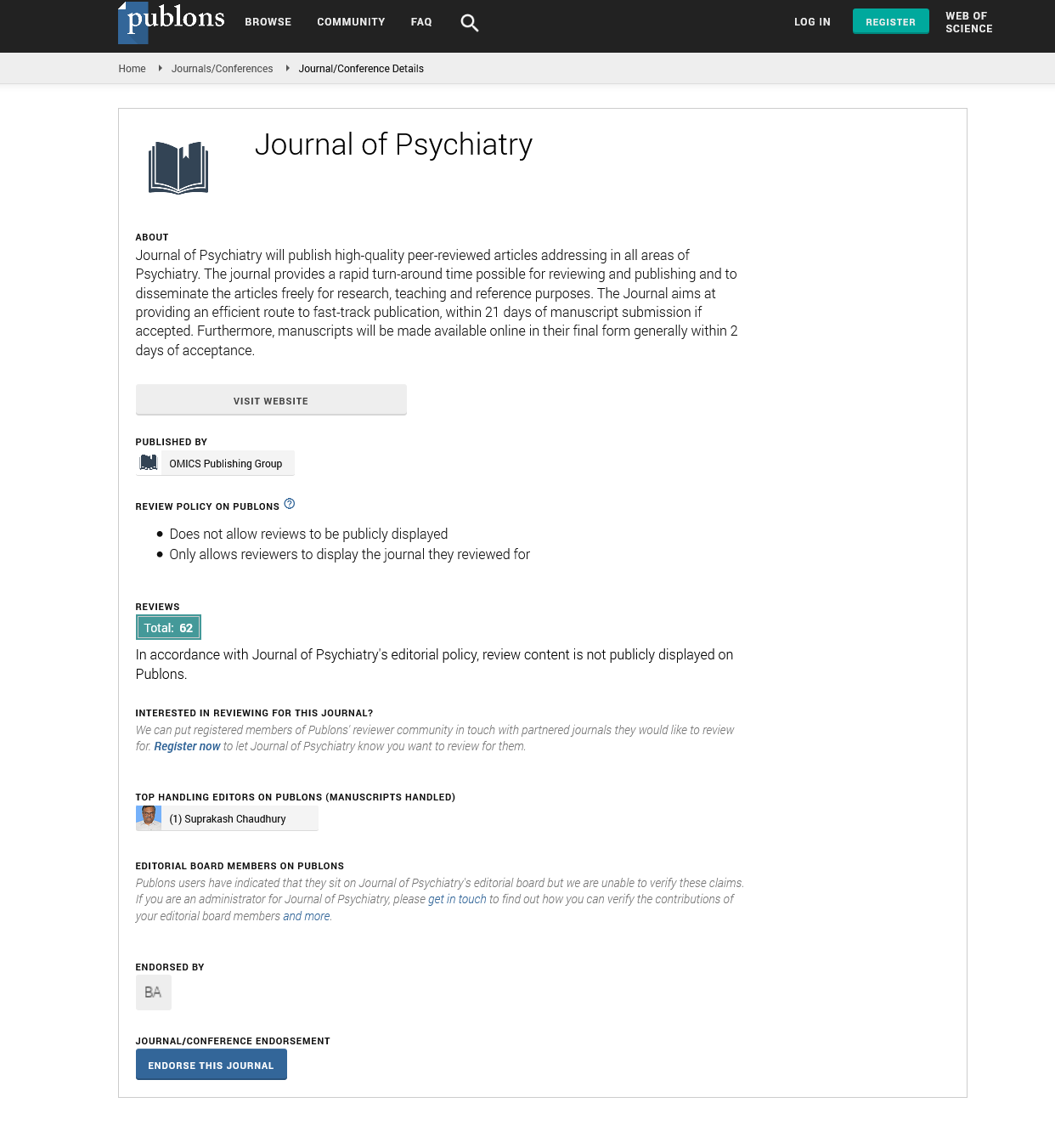Indexed In
- RefSeek
- Hamdard University
- EBSCO A-Z
- OCLC- WorldCat
- SWB online catalog
- Publons
- International committee of medical journals editors (ICMJE)
- Geneva Foundation for Medical Education and Research
Useful Links
Share This Page
Open Access Journals
- Agri and Aquaculture
- Biochemistry
- Bioinformatics & Systems Biology
- Business & Management
- Chemistry
- Clinical Sciences
- Engineering
- Food & Nutrition
- General Science
- Genetics & Molecular Biology
- Immunology & Microbiology
- Medical Sciences
- Neuroscience & Psychology
- Nursing & Health Care
- Pharmaceutical Sciences
Perspective - (2025) Volume 28, Issue 1
Digital Distractions and Productivity: Assessing the Impact of Social Media on Work Efficiency
Christopher Prescott*Received: 01-Jan-2025, Manuscript No. JOP-25-28577; Editor assigned: 03-Jan-2025, Pre QC No. JOP-25-28577 (PQ); Reviewed: 17-Jan-2025, QC No. JOP-25-28577; Revised: 23-Jan-2025, Manuscript No. JOP-25-28577 (R); Published: 31-Jan-2025, DOI: 10.35248/2167-0358.25.28.725
Description
In the digital era, social media has become an essential aspect of daily life, offering instant access to information, entertainment and social interactions. However, its widespread use has raised concerns regarding its impact on work efficiency and productivity. Digital distractions, particularly those stemming from social media engagement, have been shown to interfere with cognitive functions, diminish concentration and disrupt workflow. Consequently, professionals and students alike often struggle to maintain productivity while managing the allure of social media platforms. Examining how digital distractions affect work efficiency requires insights from cognitive science, behavioral psychology and workplace dynamics. One of the primary ways social media undermines productivity is by fragmenting attention. Research in cognitive neuroscience indicates that the human brain is not optimized for multitasking but rather performs best when engaged in deep, uninterrupted focus. Task-switching, which occurs when individuals frequently alternate between work and social media, increases cognitive load. Each time a person shifts focus from a work-related task to a social media notification, the brain undergoes a reorientation process that results in cognitive delays. This phenomenon, known as the switching cost, requires additional mental effort and time to regain focus. Studies suggest that even brief interruptions such as glancing at a social media update for a few seconds can extend task completion times significantly due to the mental effort required to reestablish concentration.
Furthermore, social media usage activates dopamine-driven reward mechanisms that reinforce habitual engagement with digital platforms. Dopamine, a neurotransmitter linked to pleasure and motivation, is released when individuals receive notifications, likes, or comments. This creates a feedback loop that encourages frequent checking of social media, even in professional or academic settings. The unpredictability of notifications, a concept known as variable reinforcement, makes it challenging for individuals to resist checking their devices repeatedly. Over time, this habitual behavior can shorten attention spans, increase procrastination and lower overall work efficiency. Beyond individual cognitive effects, excessive social media engagement has broader workplace implications. Many employers report declines in employee productivity due to frequent social media use during work hours. Research indicates that employees who regularly use social media while working exhibit lower task completion rates, reduced creativity and higher stress levels. Additionally, the vast amount of information available on digital platforms can contribute to information overload, making it difficult for individuals to discern relevant content. This can lead to mental fatigue, impaired decisionmaking and difficulty prioritizing essential tasks.
Another significant issue is the culture of immediacy fostered by social media, which pressures individuals to respond to messages, updates and trending topics in real time. This constant need for instant communication contributes to chronic distraction, making it difficult to engage in deep work— prolonged, uninterrupted focus on complex tasks. Deep work is crucial for creative problem-solving, strategic thinking and highquality output. However, the persistent interruptions caused by social media make it increasingly difficult for individuals to enter and maintain deep concentration, thereby reducing their ability to produce meaningful work. The impact of digital distractions extends beyond the workplace to academic settings, where students and researchers also face similar challenges. Studies on academic performance reveal that students who frequently check social media while studying exhibit lower retention rates, diminished comprehension and weaker problem-solving abilities. The intermittent use of social media during study sessions disrupts the brain’s ability to encode and consolidate information effectively, leading to poor learning outcomes. Furthermore, prolonged social media engagement has been associated with increased stress and anxiety, further impairing cognitive function and academic motivation.
Despite these challenges, individuals and organizations can adopt strategies to minimize the negative effects of digital distractions. Time management techniques, such as the Pomodoro Technique, encourage individuals to work in focused intervals with scheduled breaks, reducing the impulse to check social media. Digital detox methods, including app blockers and notification restrictions, can help create boundaries between work and leisure activities. Employers can also cultivate a workplace culture that promotes mindful technology use by encouraging deep work sessions and limiting non-essential digital interactions during work hours. Another effective approach is behavioral conditioning, which involves retraining the brain to associate social media engagement with specific time slots rather than spontaneous usage. By designating set times for social media interaction, individuals can reduce habitual checking and improve their ability to concentrate on work-related tasks. Additionally, self-monitoring tools and productivity apps can help individuals identify patterns of distraction and implement strategies to mitigate them. Raising awareness about digital consumption habits enables individuals to make more conscious decisions about their social media usage and prioritize efficiency over momentary engagement.
Citation: Prescott C (2025). Digital Distractions and Productivity: Assessing the Impact of Social Media on Work Efficiency. J Psychiatry.28:725.
Copyright: © 2025 Prescott C. This is an open-access article distributed under the terms of the Creative Commons Attribution License, which permits unrestricted use, distribution and reproduction in any medium, provided the original author and source are credited.

